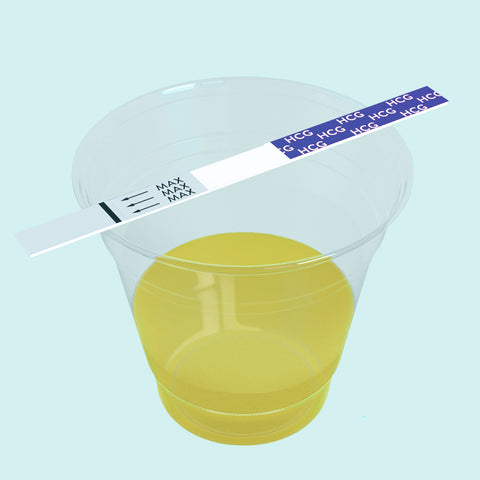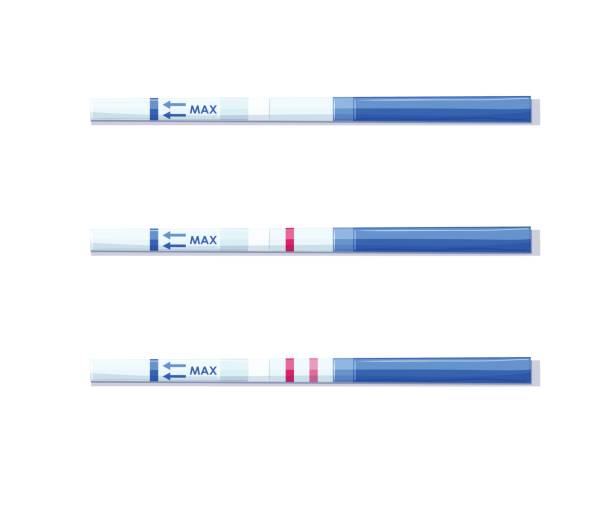In 2024, home pregnancy test strip remain one of the most convenient and accessible methods for detecting pregnancy early on.
Whether you are trying to conceive or simply want to confirm suspicions, knowing how to properly use a pregnancy test strip is essential.

In this guide, we’ll walk you through the steps to ensure accurate results and provide some tips for maximizing the effectiveness of your test.
Understanding Pregnancy Test strip
A Urine-based pregnancy test is a home pregnancy test for early detection of pregnancy. It detects Human Chorionic Gonadotropin (HCG), a hormone your body starts to develop once you become pregnant.
Your HCG level starts to build up once the fertilized eggs implant in your uterus 6-10 days after conception.
Choosing the Right Test Strip
Urine tests and Blood tests are the two main ways of taking pregnancy tests. The Blood test is done in the hospital with the help of medical practitioners while the Urine test is the homemade one and it is the one this article is dwelling on. There are 3 various methods by which this homemade test can be carried out;
- Traditional Test Strip
- Midstream Test Strip
- Digital Test Strip
Traditional Pregnancy Test Strip
There are various local methods for detecting pregnancy at home. They include; ‘the Wheat and barley test’, the Sugar test’, ‘the Salt test’, ‘the Baking soda test’, ‘the shampoo test’ etc.
These methods are cheap however, Health care practitioners have not explored the effectiveness of these methods as they are not accurate sometimes.
Midstream Pregnancy Test Strip
This is a type of pregnancy test that requires you to hold the test stick directly in your urine stream while you urinate.
This method is convenient because it allows for easy and direct collection of urine without the need for additional urine collection cups.
Digital Test Pregnancy Strip
These are the ones that read “pregnant” or “non-pregnant”. Digital pregnancy tests strip take the guesswork out of analyzing a pregnancy test but they are not necessarily accurate.
When to Take the Tests
When you have your first morning pee is the best time to have the pregnancy test.
However, some pregnancy tests are strong and sensitive enough to detect HCG in your urine no matter what time of day you take the test. Also, for confirmation of the result you got, you could take two pregnancy tests consecutively.
However, for more accurate results and to dispel all doubts, wait until after you have missed your period to take a test.
Step-by-Step Instructions
To take your homemade pregnancy test, here are 5 steps you need to take;
- Step 1: Collect the urine sample in a clean container
- Step 2: Clean your hands before you open the pouch of the pregnancy test kit.
- Step 3: Let the strip be in the sample for 8-10 seconds.
- Step 4: Remove the strip from the sample and place it on a dry surface.
- Step 5: Wait for a minute or two, the test strip will show you the results. If you see the following, this is what it means;
- 1 line: Negative, it means you are not pregnant
- 2 lines: Positive, this means you are pregnant
- No lines: This means the test is null and void and you might have to redo it.
A picture of a ‘null and void test result’, a negative test result, and a positive test result accordingly;

Tips for Accurate Results
There are a few things you need to be wary of if you have accurate results in mind;
- Reading the test results within the specified time frame: If you read the results after too much time has passed, you may see an evaporation line that is easy to confuse with a faint line on a pregnancy test.
- Avoiding excessive fluid intake before testing: Don’t drink excessive amounts of fluids before you take a pregnancy test. This can dilate (thin out) your HCG levels
- Checking the expiration date for the test strip: If a home pregnancy test has been in your home for a while, be sure to check the expiration date. An expired pregnancy test can give you unreliable results.
- Use a timer to check the testing time: It is important to read the results at the correct time to ensure accurate results. Always use a timer.
- Confirming results with a follow-up test if necessary: You could also take two pregnancy tests for confirmation if you get the same result.
What To Do After Testing
After the pregnancy test has been carried out and you have known your results. The few things you should do depending on which side of the divide you find yourself;
- Seeking medical advice if you are unsure about the results: Visiting your doctor is the only way to confirm that your positive is accurate. This is done with an in-office pregnancy test that measures the amount of Human Chorionic Gonadotropin (HCG).
- Considering follow-up testing or consultation with a health care professional: In addition to seeing a doctor after a pregnancy test, it is beneficial to assess lifestyle and health behaviour to make adjustments to support the growing life inside you.
- Exploring available resources and support options for pregnancy-related concerns: Following the confirmation, schedule your first prenatal checkup.
Conclusion
In conclusion, knowing how to use a pregnancy test strip correctly can provide valuable insights into your reproductive health.
By following the steps outlined in this guide and staying informed about best practices, you can feel confident in your ability to use a pregnancy test strip effectively in 2024 and beyond.







